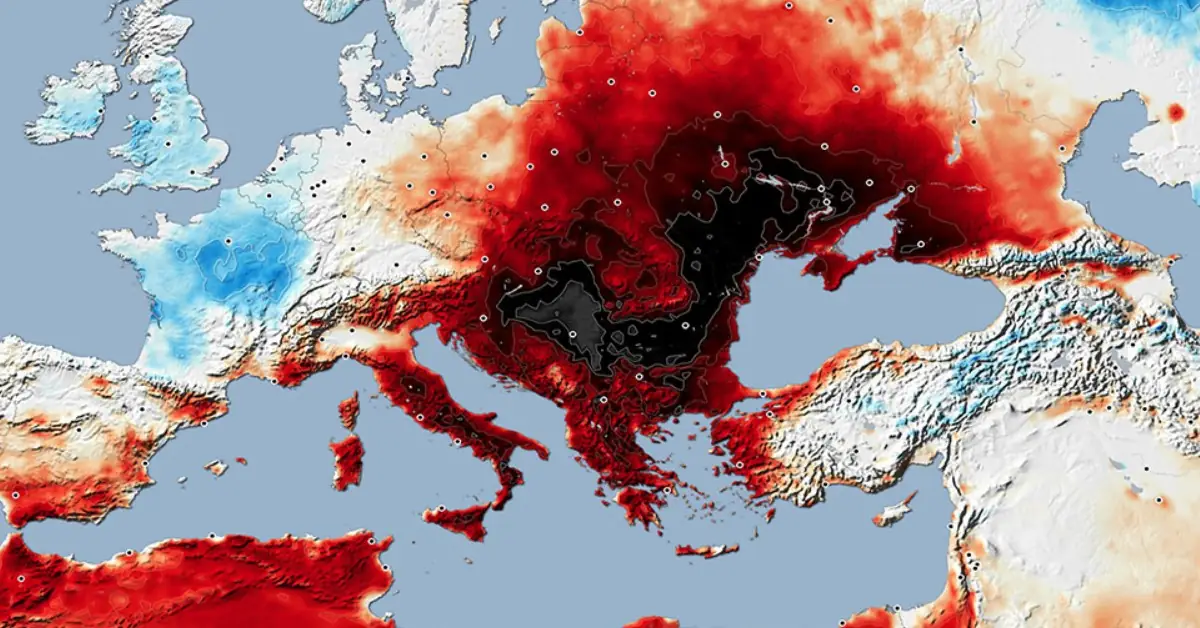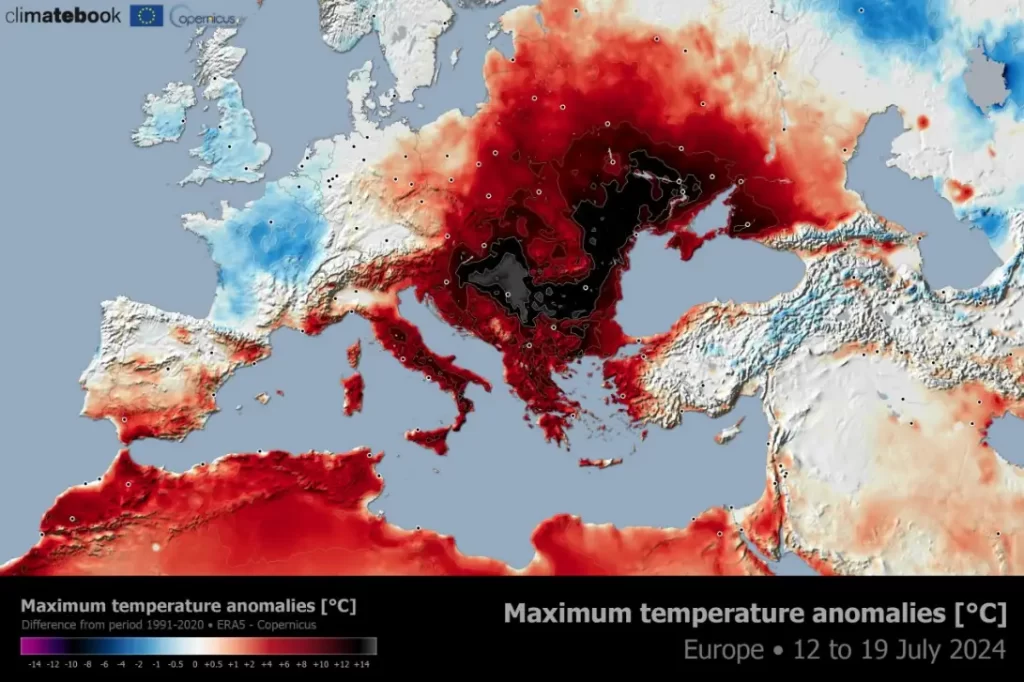Intense, long-duration heatwave affecting SE Europe

Southern and eastern Europe are an intense heatwave since early July, with temperatures forecast to remain high for at least another two weeks. The most intense heat was felt across the Balkan Peninsula and eastern Europe, where daily temperatures exceeded 40 °C (104 °F) in many areas. The Mediterranean Sea has also seen unprecedented warmth, with sea temperatures reaching 30 °C (86 °F) in some areas.
- Global weather models predict that temperatures will remain significantly above average throughout July in southern and eastern Europe.
- The concern is not just the heat the region is currently enduring, but the severe thunderstorms with powerful winds and heavy rains that usually follow.
The Balkan peninsula is particularly affected, with record-breaking temperatures expected this week. A dynamic weather pattern that began in July has shifted into a stable, prolonged heatwave across much of the continent.
Temperatures have soared into the upper 30s (above 95 °F) in many regions, with recent recordings in Romania, Serbia, Albania, Bulgaria, Bosnia, North Macedonia, and Greece exceeding 40 °C (104 °F).
Serbia has experienced historic heat, with Vršac in northeast Serbia recording a minimum temperature of 30.6 °C (87.1 °F) on Saturday and 31.2 °C (88.2 °F) on July 14, potentially the highest minimum temperatures ever recorded in the country.
Belgrade, the capital of Serbia, reported minimum temperatures of 27.3 °C (81.1 °F) on July 13 and 27.5 °C (81.5 °F) on July 14, nearing record highs for the lowest daily temperatures.
High night temperatures have also been reported in Croatia, Bosnia, Romania, and North Macedonia. In Greece, some stations noted that minimum temperatures did not fall below 30 °C (86 °F) over the weekend. This weather pattern is expected to persist until early next week, with a strengthening heat dome from the Mediterranean region into Eastern Europe.
An absolute national record for sea temperature was measured in Dubrovnik on Monday, July 15. At 17:00, an official measurement recorded a sea temperature of 29.7 °C (85.4 °F) in the city, marking the highest ever recorded in the official history of measurements in Croatia.
This new record surpasses the previous one held by Rab, where a sea temperature of 29.5 °C (85.1 °F) was measured in 2015.

July is typically the hottest month for the region, but current temperatures and forecasts for the next 7-10 days indicate that they will be around 10 °C (18 °F) above average in many regions.
Daytime temperatures across the Balkans have widely reached the high 30s to low 40s °C (over 104 °F), significantly above the seasonal average, with night-time temperatures remaining well into the 20s °C (mid-70s °F).
In urban areas like Athens, Greece, night-time temperatures are forecasted to stay at or above 30 °C (86 °F) due to the urban heat island effect, caused by heat-absorbing materials, reduced vegetation, and human activities, intensifies urban temperatures, increasing health risks and energy demands.
Several national weather services have issued excessive heat warnings and advisories for this week.
The heat is expected to gradually subside towards the end of the week, with thunderstorms and cooler conditions anticipated in parts of the Balkans by the weekend.
Officials warn of an increased wildfire risk due to prolonged dry and warm conditions combined with low humidity.
Albania has requested assistance from the EU to tackle wildfires in the Dropull district, approximately 250 km (155 miles) south of Tirana.
Over the weekend, numerous wildfires ignited in Greece and various parts of the Balkans and Eastern Europe. Greek officials have indicated that the country faces its most severe wildfire risk in two decades this summer, following a mild and dry winter, and spring that have made the vegetation extremely flammable.
Dry conditions over recent months have caused some water reservoirs in Greece to reach their lowest levels in a decade, raising the risk of potential water restrictions during the peak tourism season, especially on some Greek islands.
The concern is not just the heat the region is currently enduring, but the severe thunderstorms with powerful winds and heavy rains that usually follow.
References:
1 Parts of Europe brace for a prolonged and historic heatwave that may last through the end of July – Severe Weather Europe – July 15, 2024
2 Weather tracker: Parts of Europe suffer under heatwave – with little relief at night –The Guardian – July 15, 2024
Featured image credit: Climatebook

I’m in the balkans. It is indeed as you wrote, very intense continous heat with no respite. I have never experienced anything like this in my life. Even at night it doesn’t really cool down.